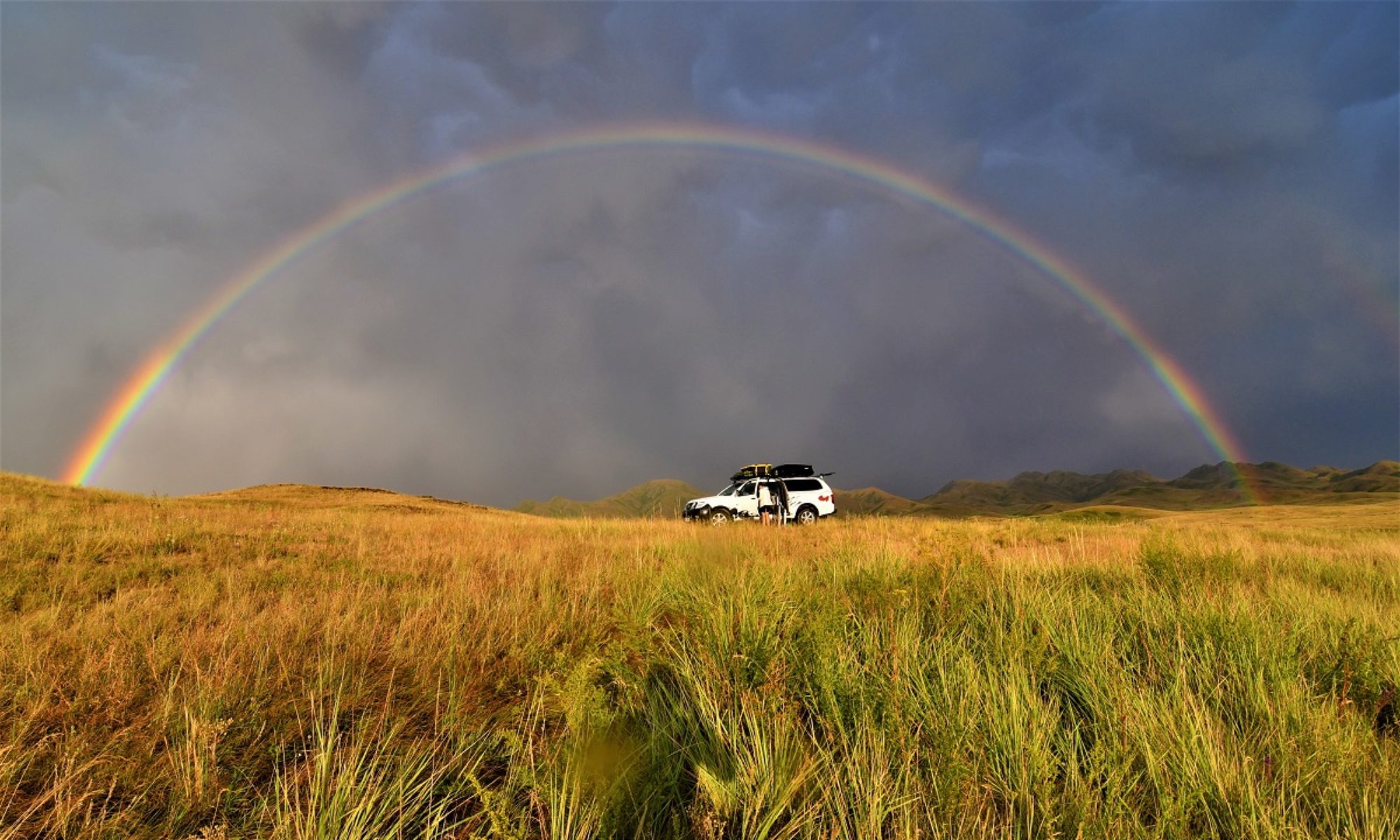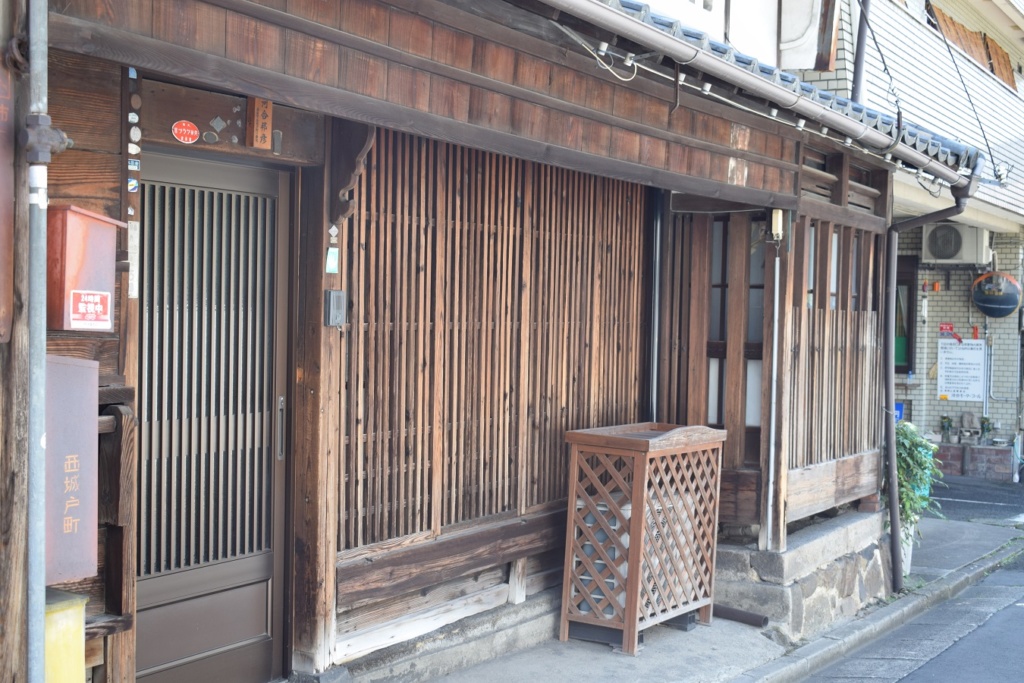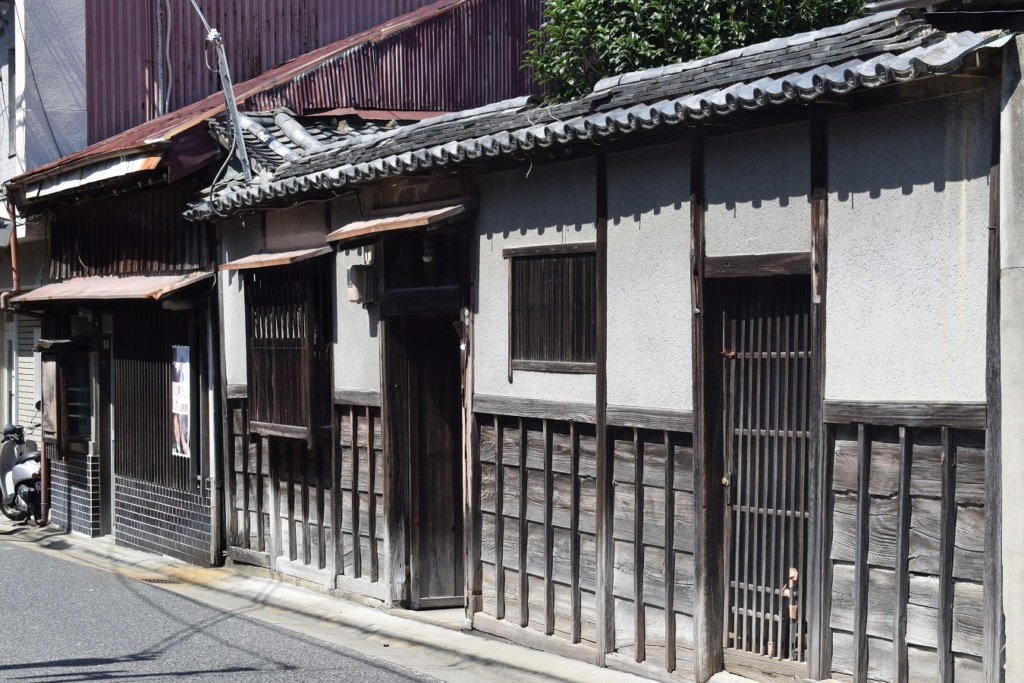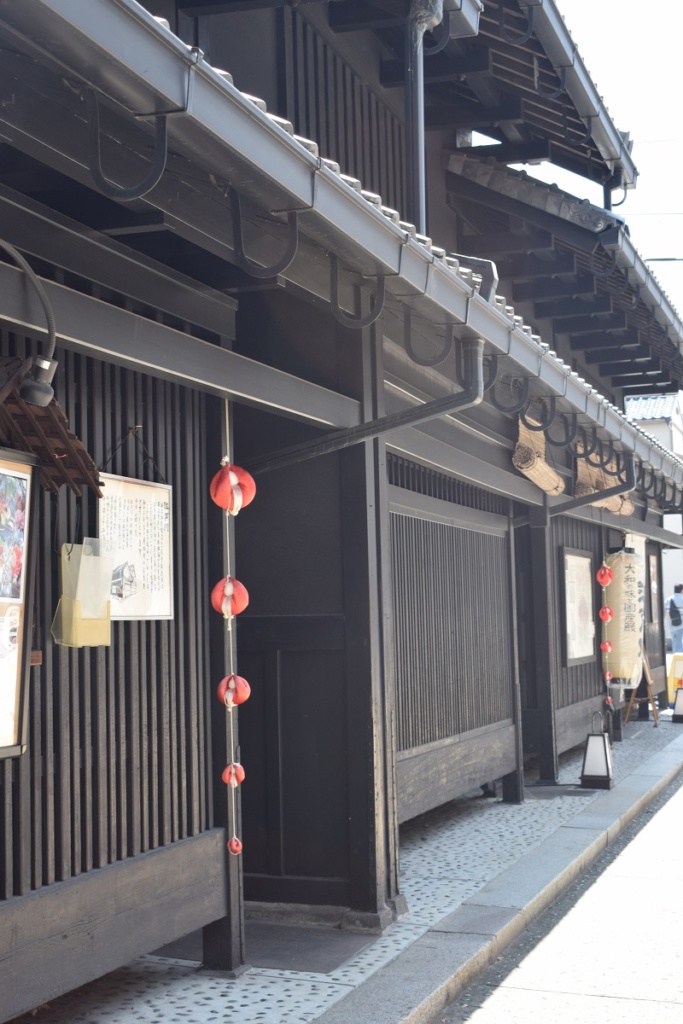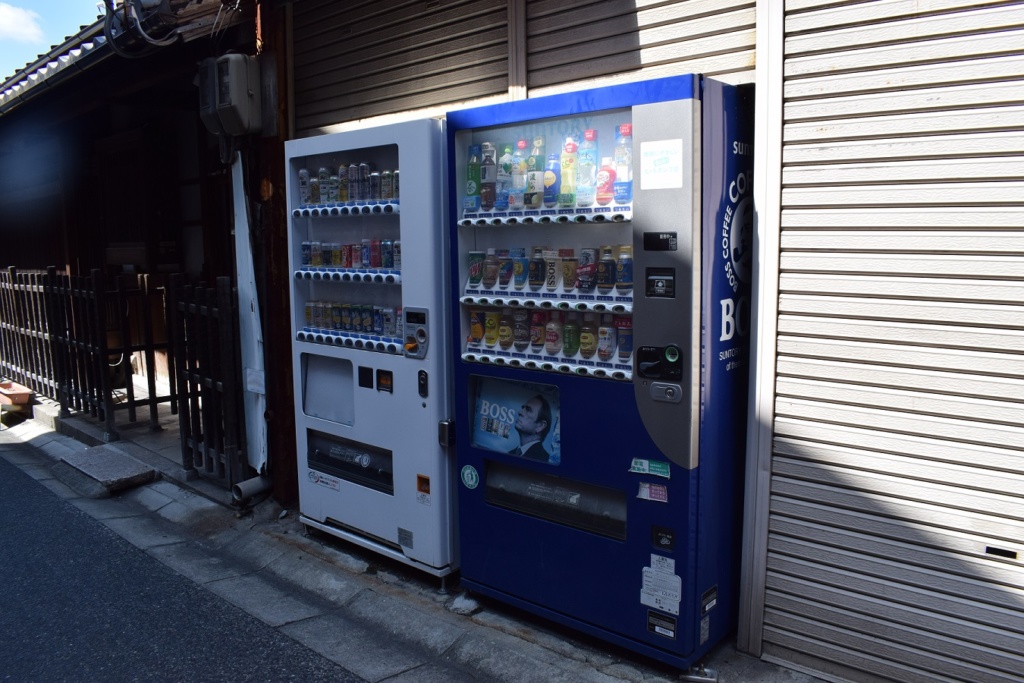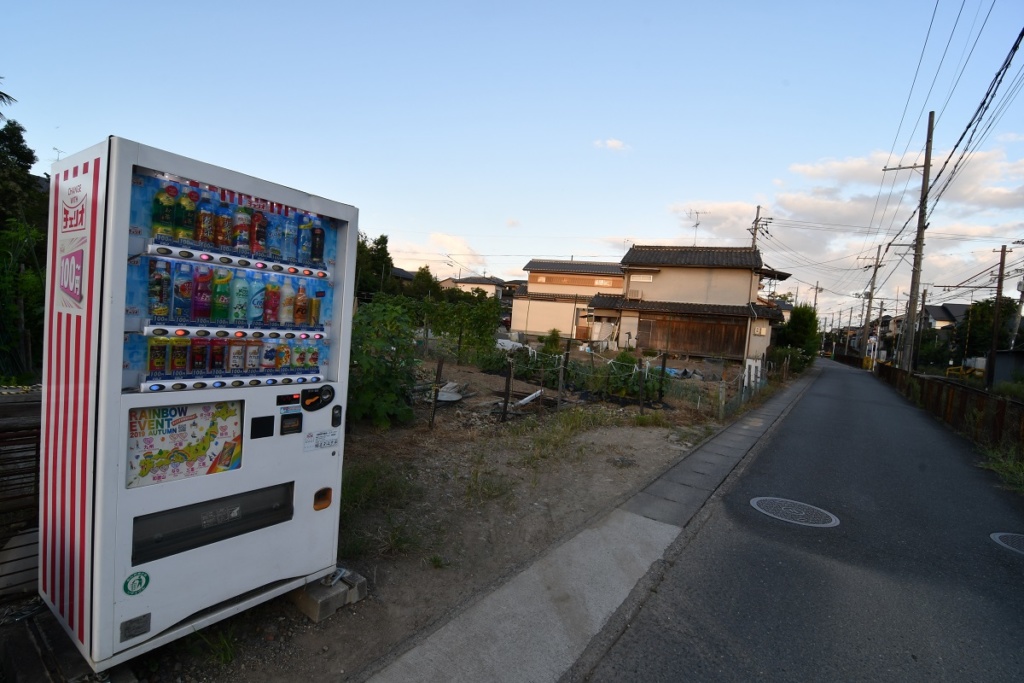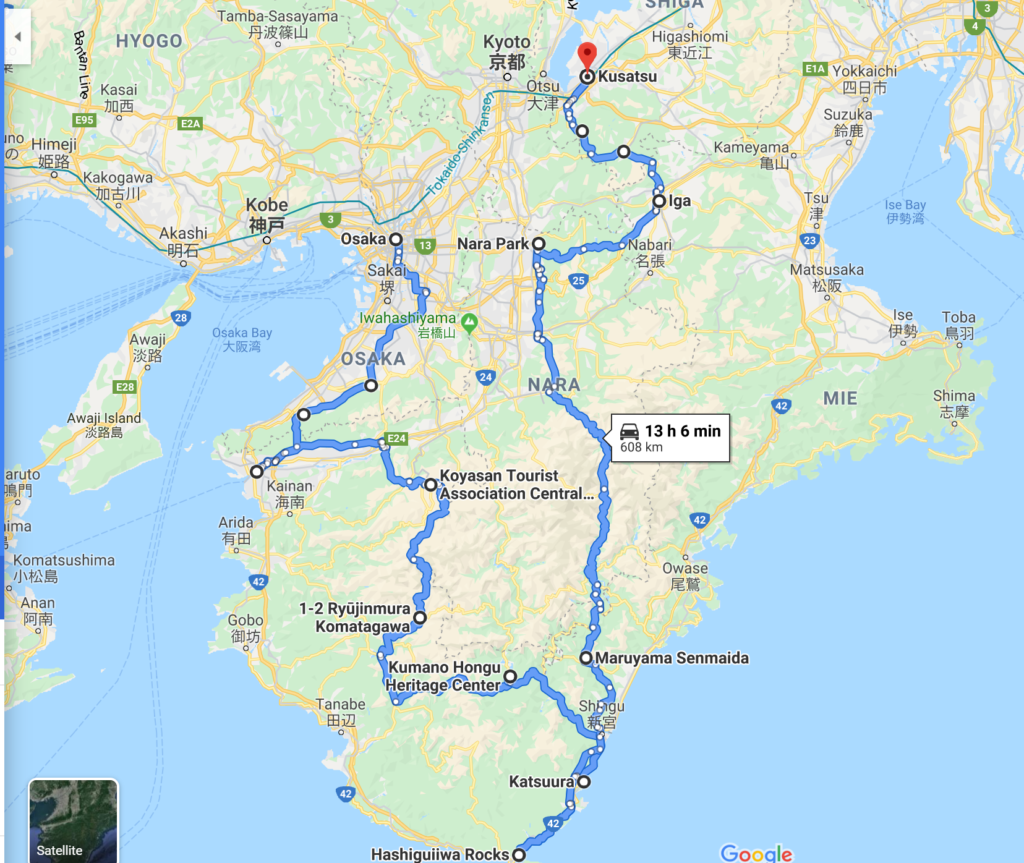
Monday 9th September, 2019 – KOYASAN
Scenery on the way:
Arrived late in Koyasan and found a parking space for the night just opposite one of the shrines.
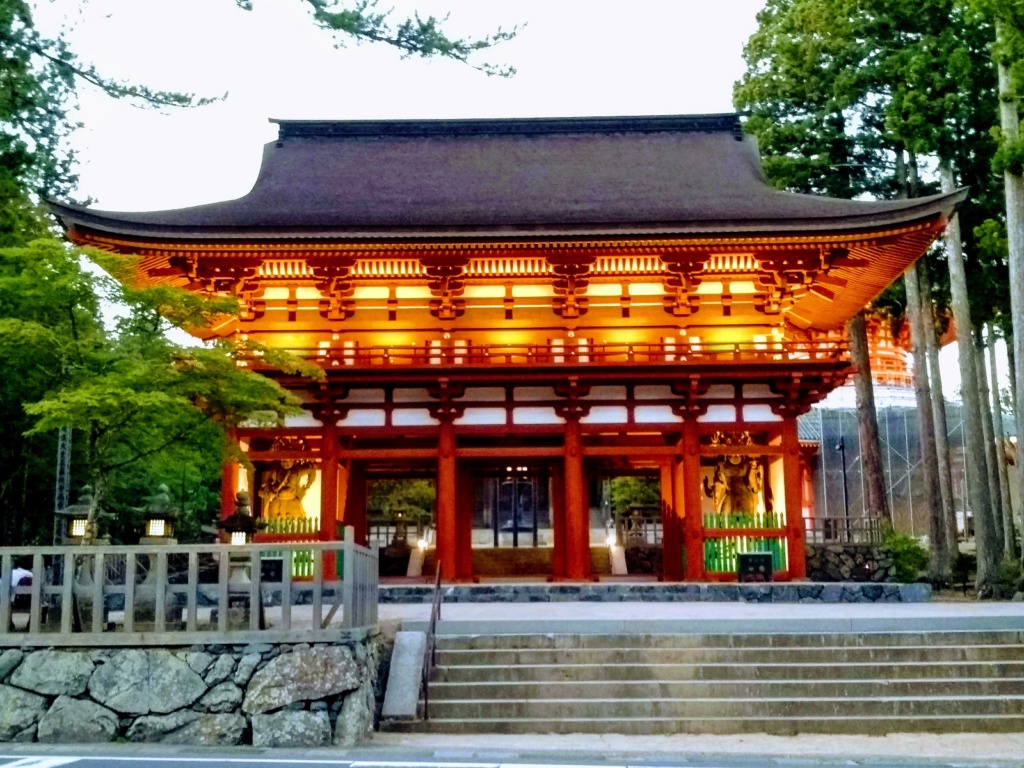
In the morning, we saw pilgrims come and pray.
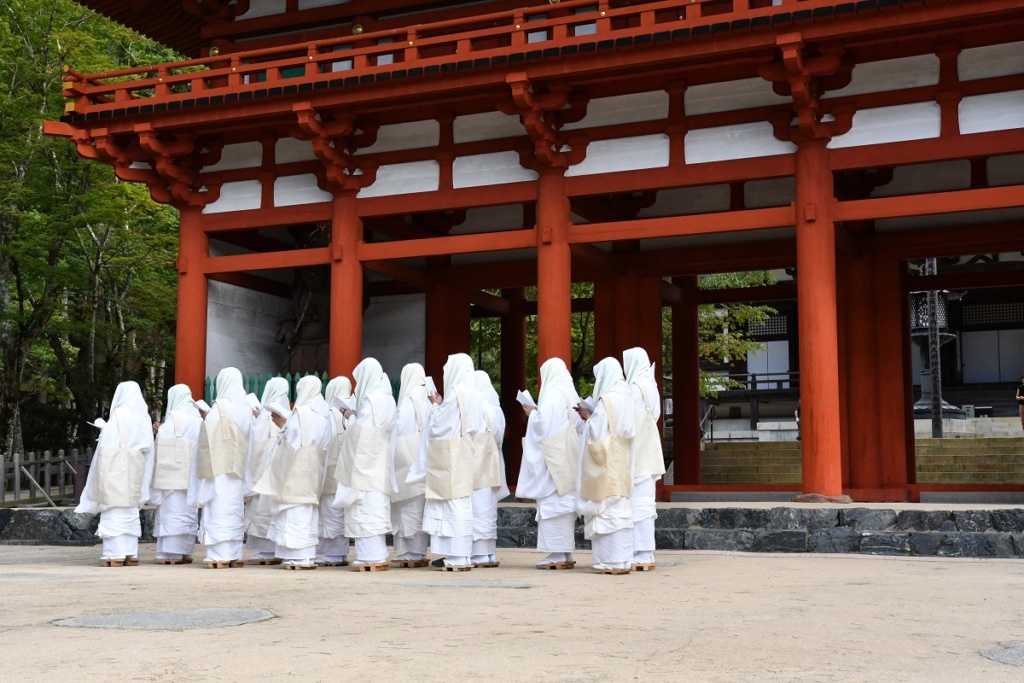
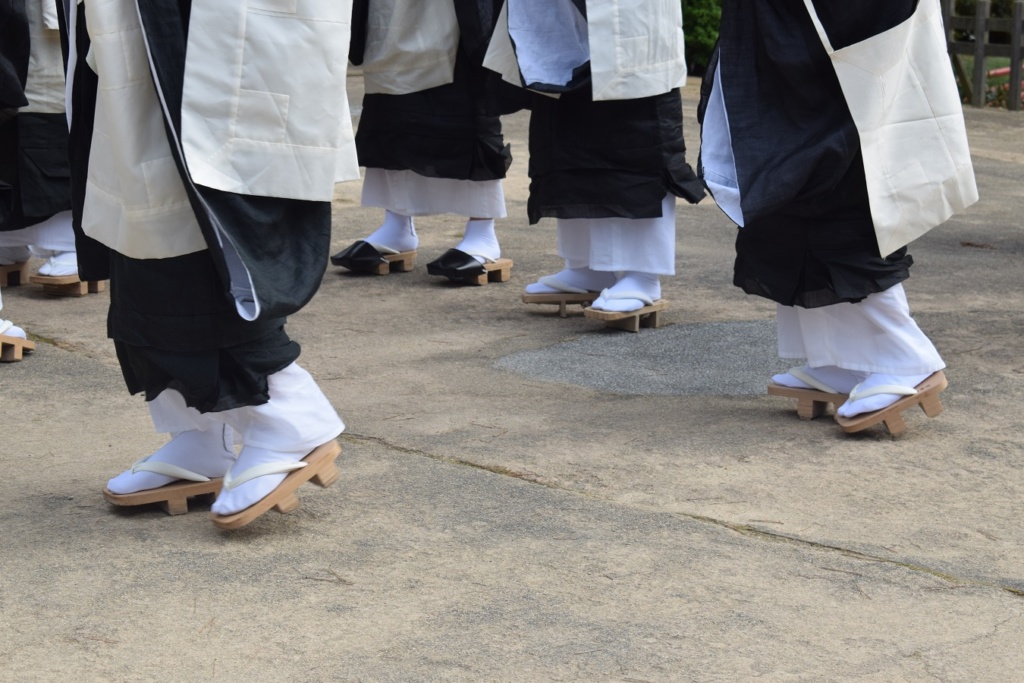
Mount Koya ( Kōyasan) is the center of Shingon Buddhism, an important Buddhist sect which was introduced to Japan in 805 by Kobo Daishi (also known as Kukai), one of Japan’s most significant religious figures. A small, secluded temple town has developed around the sect’s headquarters that Kobo Daishi built on Koyasan’s wooded mountaintop. It is also the site of Kobo Daishi’s mausoleum and the start and end point of the Shikoku 88 Temple Pilgrimage.
Tuesday 10th September, 2019 – Kumano Hongu Taisha
We drove on to another site of pilgrimage : Kumano Hongu Taisha, a Shinto shrine located in the deep and rugged mountains of the Kii Peninsula. It is included as part of the Kumano Sanzan in the “World Heritage Sacred Sites and Pilgrimage Routes “.The main deity enshrined is Kumano Gongen . All of the ancient Kumano Kodō routes lead to the Grand Shrine.
The Grand Shrine is reached at the top of a long path and series of steps, it is surrounded by large cedar and cypress trees. Its wooden architecture fits perfectly with its surroundings.
Torii Gate: The Torii is a gateway, that signals the transition from the profane to the sacred, as it is usually located at the entrance to Shinto shrines, though it isn’t rare to find them even at the entrance of Buddhist temples.
Shimenawa”Sacred rope” The rope tied around a shrine space, or across its entrance, to mark its sacred nature is called the shimenawa. Traditionally woven from hemp, but nowadays more frequently rice or wheat straw, this rope and its shide paper streamers is a common part of New Year decorations as well.
If you want to learn more about Kumano shrines please go to https://en.wikipedia.org/wiki/Kumano_shrine
Wednesday 11 September,2019 – Nachi Falls and Kumano Nachi Taisha Shrine
On the way to Katsuura, we stopped at the Nachi Falls, the tallest in Japan at 133 m and are part of the “Sacred Site and Pilgrimage Routes in the Kii Mountain Range” UNESCO World Heritage Site. The Hiryu-jinja Shrine stands in front of the Nachi Falls , the auxiliary shrine of the Kumano Nachi Taisha Shrine. The Hiryu-jinja Shrine has no honden (main hall) because the falls itself serves as the object of worship. Even the splashes of the falls are believed to have the divinity of long life.
Further up the mountain is a group of buildings, including the Pagoda. This version was built in 1971 to mark the three hundredth anniversary since the original burned down.
Thursday 12th September, 2019 – KATSUURA
The largest volume of freshly caught tuna in Japan is brought into Katsuura Fishing Port. A highlight here is the morning market where large quantities of tuna are auctioned off in a lively atmosphere. The auction is all over by 8 a.m so we made sure we were there early!
Later, we drove further south down the coast to Hashigui-Iwa Rocks. There, 40 odd looking rocks stand in the sea on a line which makes them look like pillars of a bridge, stretching 900m from the shore to Oshima Island. Legend says that Kobo Daishi ( the monk who founded Koyasan above) built this natural marvel!
Friday 13th September, 2019 – Katsuura
Last night we heard some public announcement made on the loudspeaker in the town and it turns out that it was announcing an incoming typhoon. We had strong winds and rain all night. It was still very strong in the morning so we decided to stay put.
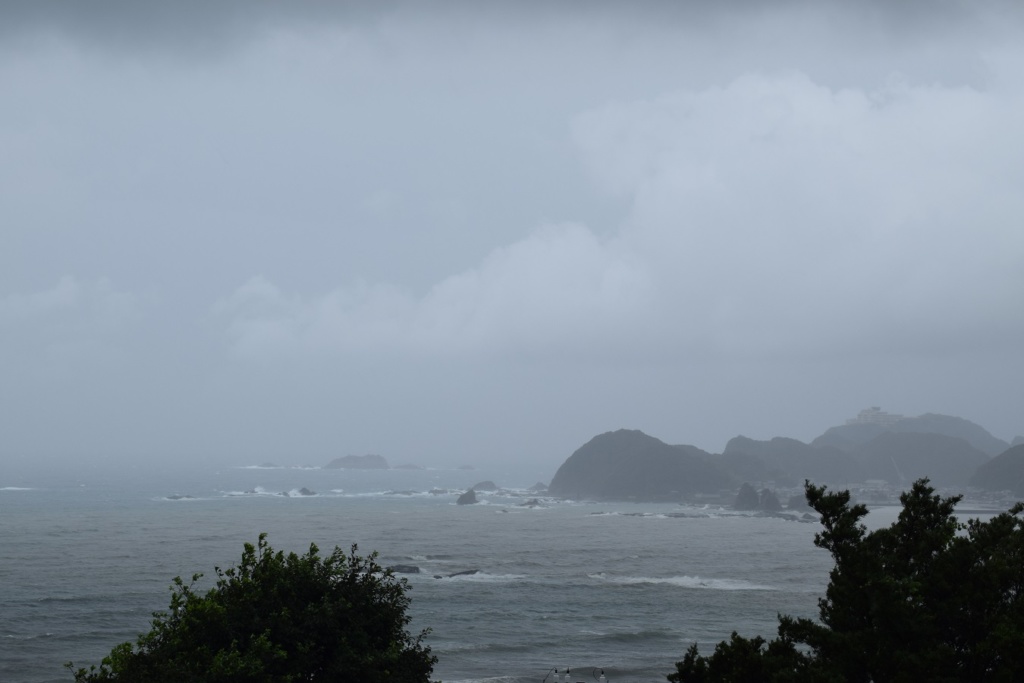
Saturday 14th September, 2019 – Maruyama Senmaida
Weather is still grey and overcast but we decided to start on our way up to Kyoto. We stopped at Maruyama-Senmaida which is one of the best such sites called ” thousand paddies”. ( Where large numbers of terraced rice paddies cover a hillside, the area is known as tanada (terraced paddies) or senmaida (a thousand rice paddies).
Maruyama-Senmaida was built on the steep mountainside over a period of 400 years. According to local records, in the 16th century, there were more 2,200 paddies. By the 1990s, this senmaida was down to just 500 paddies in cultivation, and then local preservation efforts began . Some scheme was set up where people would commit to revive and maintain a paddy. Today, there are a total of 1,340 rice paddies. These have to be cultivated entirely by hand due to their small size and it is hard work !
Sunday 15th September, 2019 – NARA
Japan’s first permanent capital was established in the year 710 at Heijo, the city now known as Nara. Before that date, the capital used to be moved to a new location whenever a new emperor ascended to the throne.
However, as the influence and political ambitions of the city’s powerful Buddhist monasteries grew to become a serious threat to the government, the capital was moved away from Nara to Nagaoka in 784 and a few years later to Kyoto.
Nara is located less than one hour from Kyoto and Osaka. Due to its past as the first permanent capital, the city remains full of historic treasures, including some of Japan’s oldest and largest temples. Most of them are situated in Nara Park. The most famous one is Todaiji Temple ( “Great Eastern Temple” ) constructed in 752 as the head temple of all provincial Buddhist temples of Japan.
Until recently, Todaiji’s main hall, the Daibutsuden (Big Buddha Hall), held the record as the world’s largest wooden building, despite the fact that the present reconstruction of 1692 is only two thirds of the original temple hall’s size. The massive building houses one of Japan’s largest bronze statues of Buddha (Daibutsu). The 15 meters tall, seated Buddha represents Vairocana and is flanked by two Bodhisattvas.
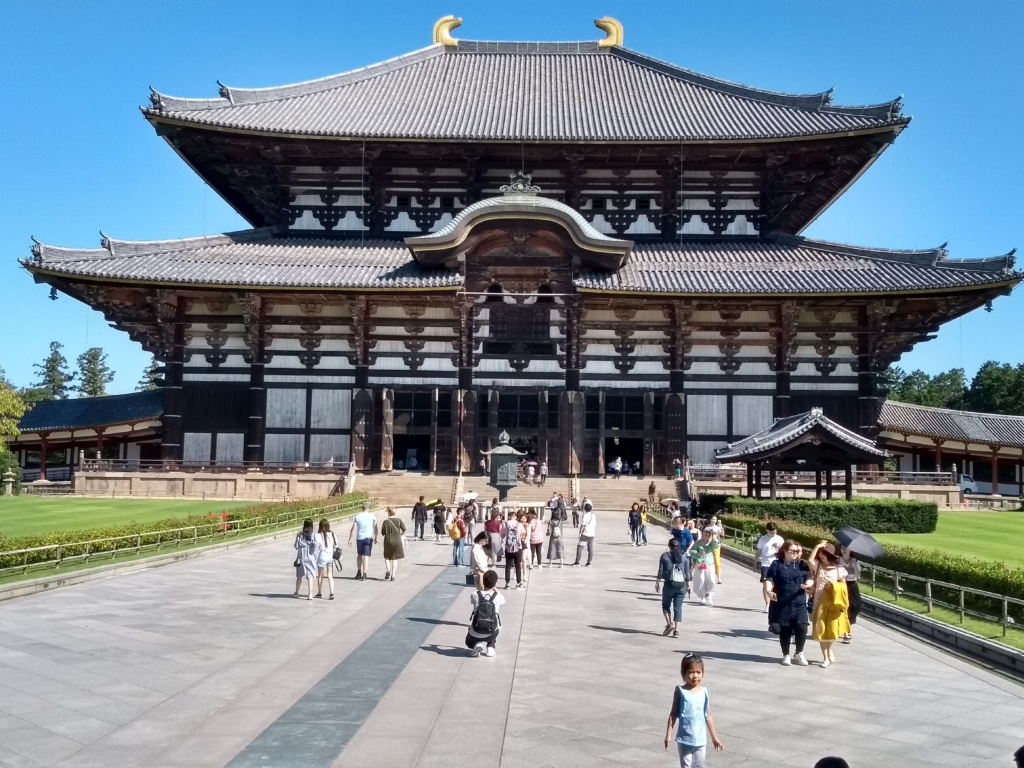
Todaiji Temple 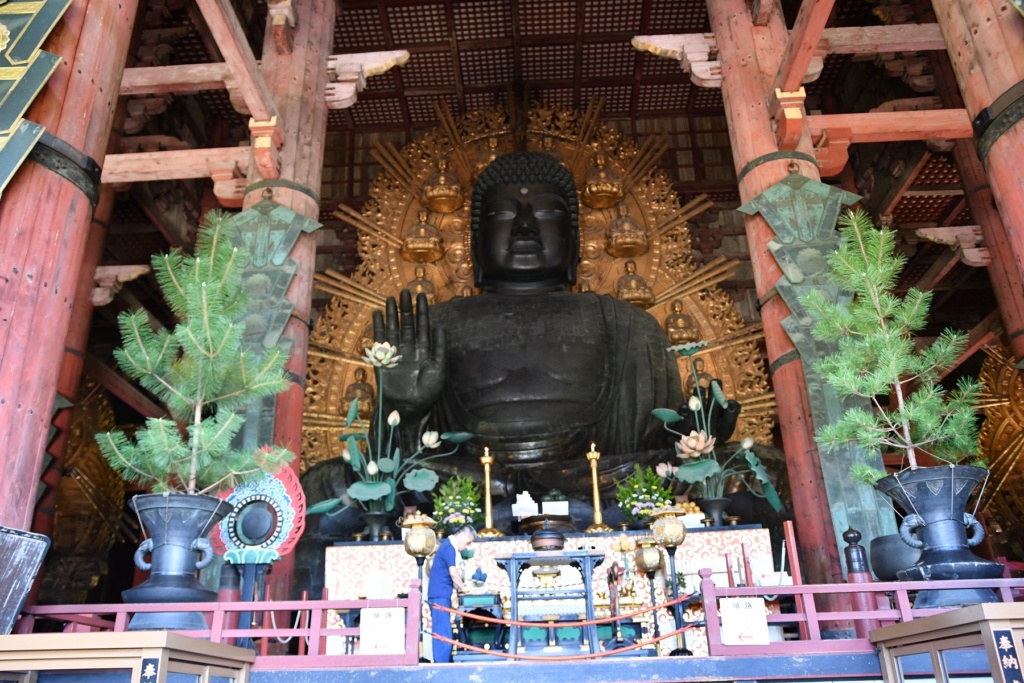
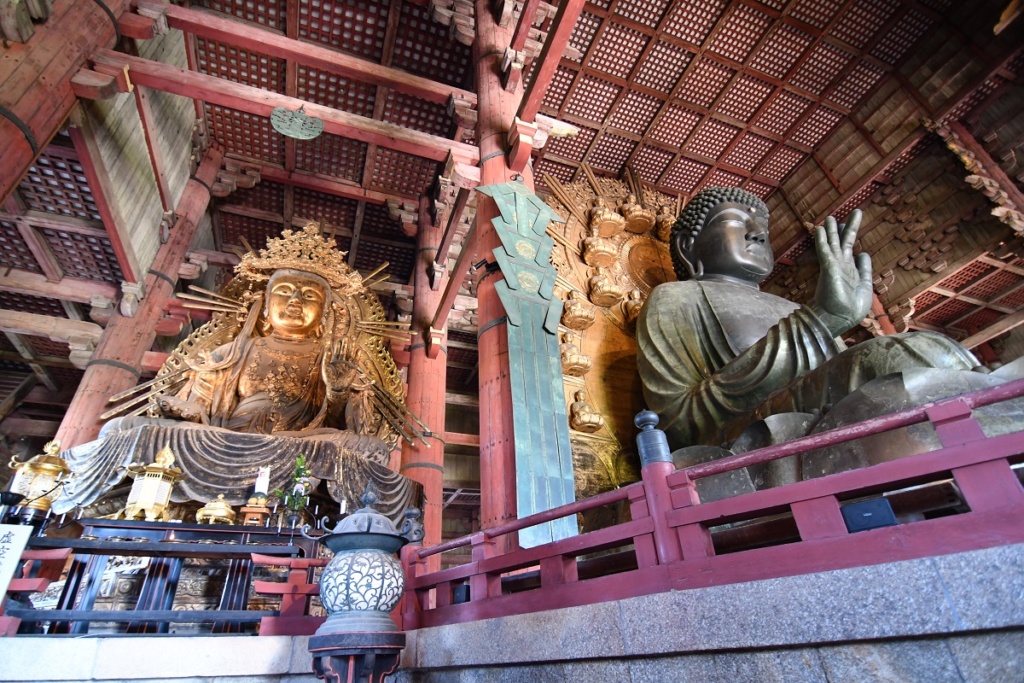
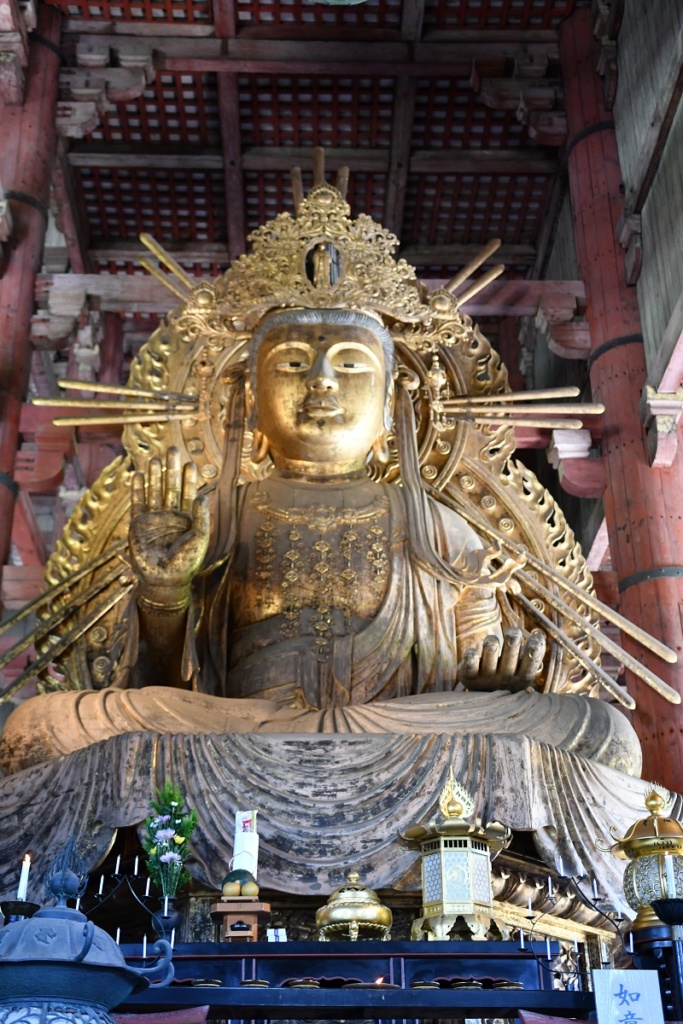
Bodhisattva 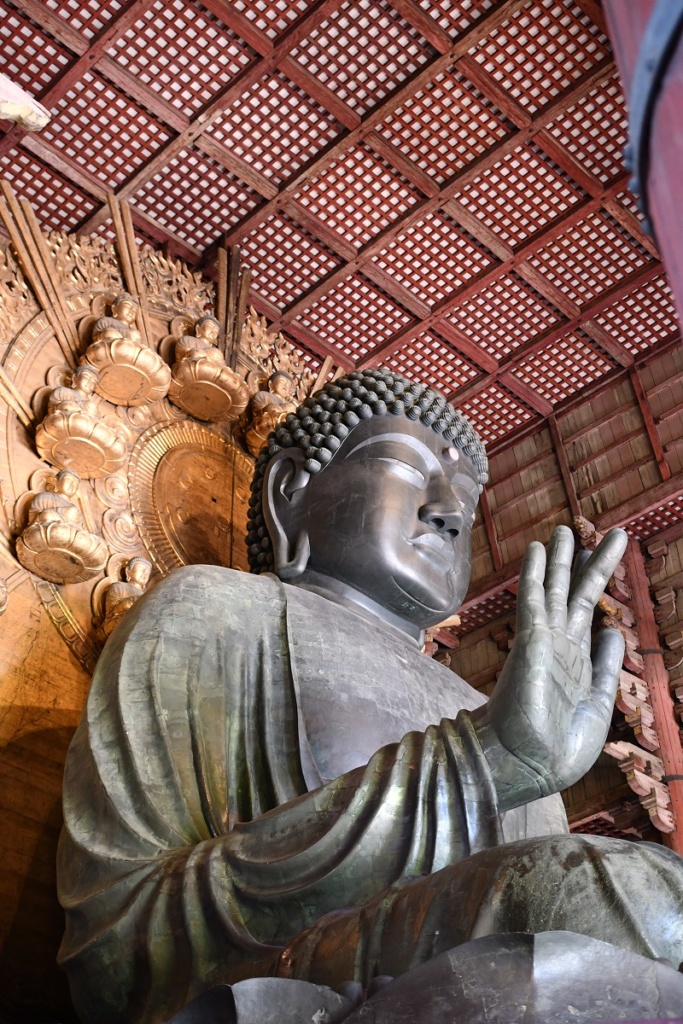
We also visited Kasuga Taisha, one of Nara’s most celebrated shrines. It was established at the same time as the capital and is dedicated to the deity responsible for the protection of the city. Kasuga Taisha has been periodically rebuilt every 20 years for many centuries however, the custom was discontinued at the end of the Edo Period (end of 19th century).
Kasuga Taisha is famous for its lanterns, which have been donated by worshipers. Hundreds of bronze lanterns can be found hanging from the buildings, while as many stone lanterns line its approaches. The lanterns are only lit twice a year during two Lantern Festivals, one in early February and one in mid August.
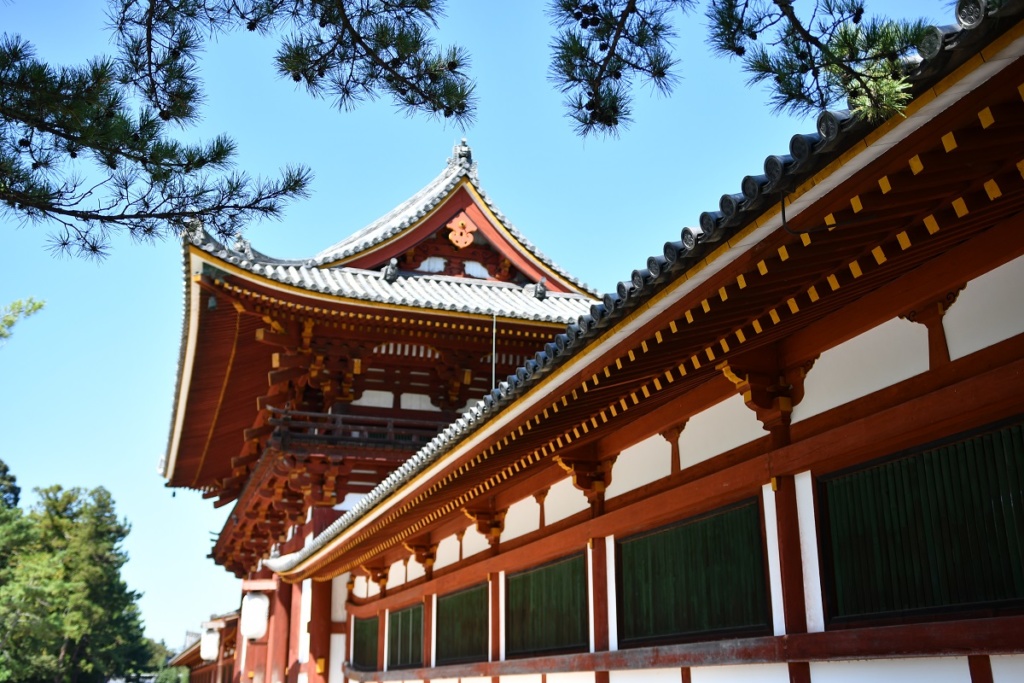
Kasuga Taisha 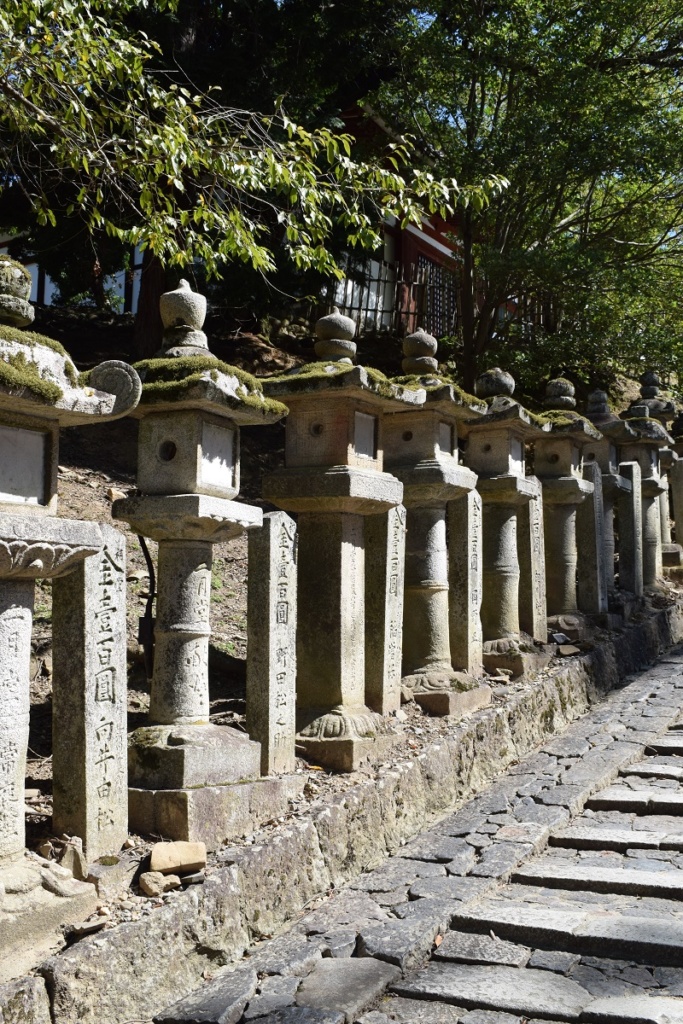
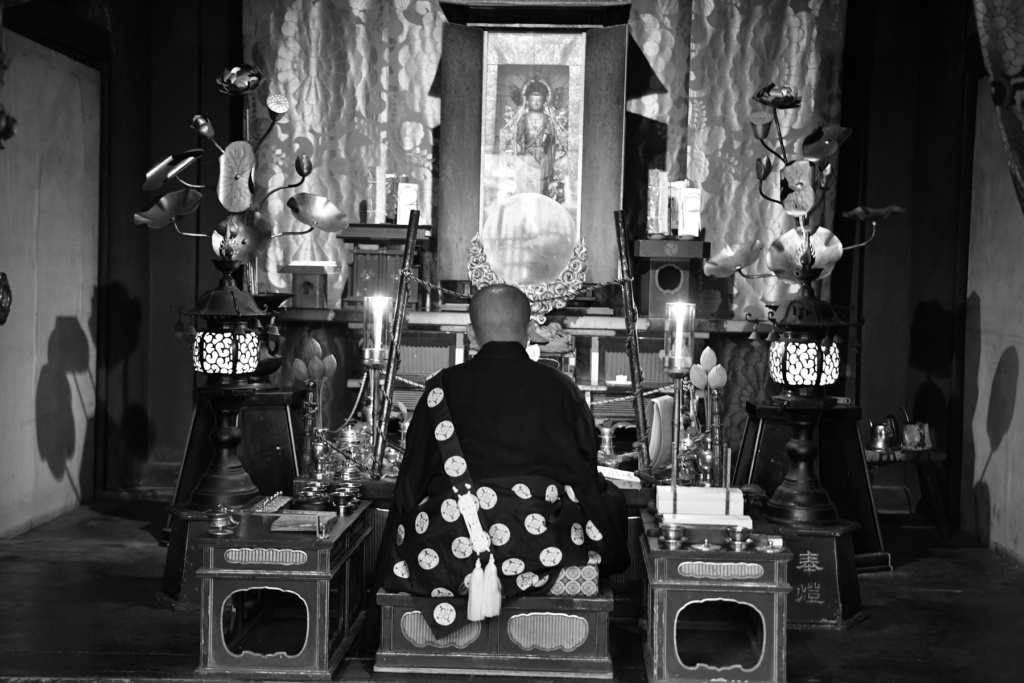
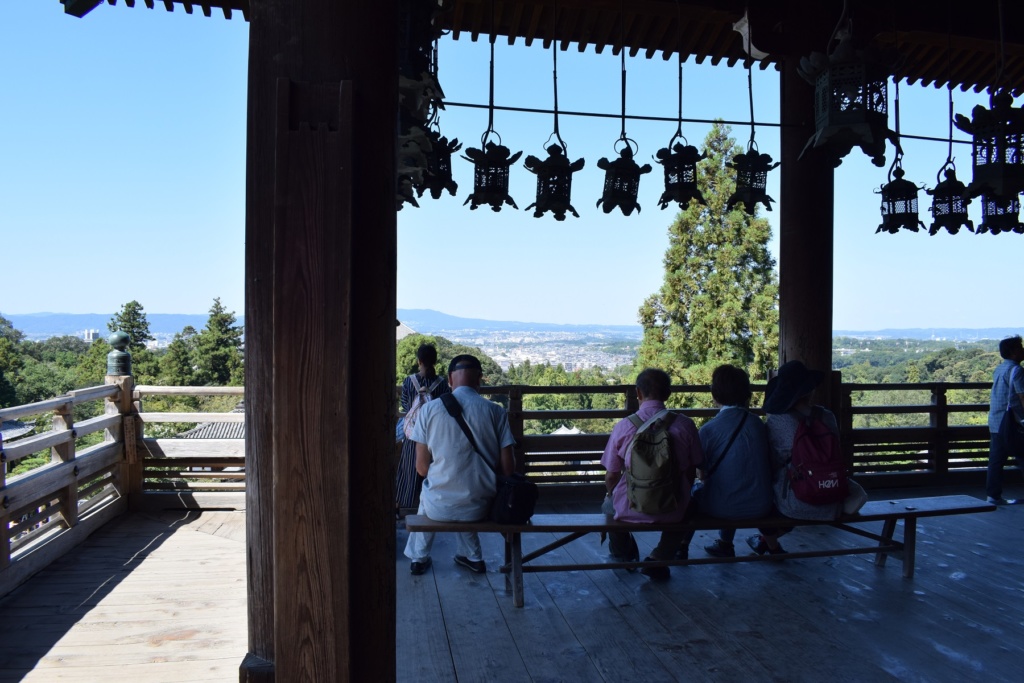
We had a walk through the old part of town with narrow streets and typical wooden houses.
You often see little shrines in front of houses, such as this one
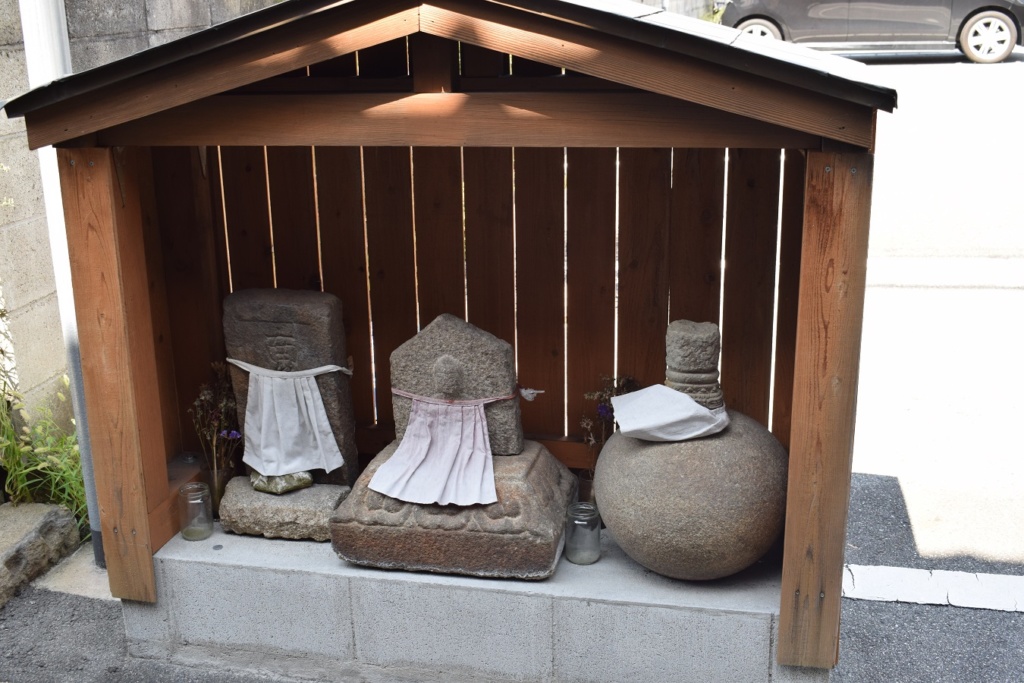
On a different level, you are never far from a drinks machine which are everywhere , in residential areas and along the roads even on country lanes.
